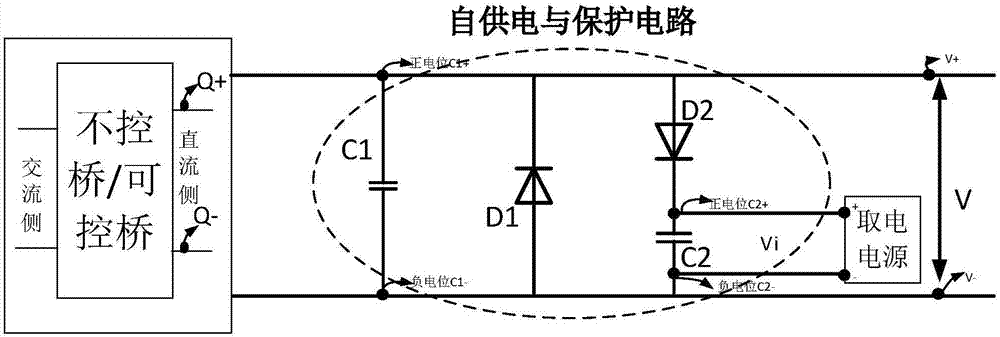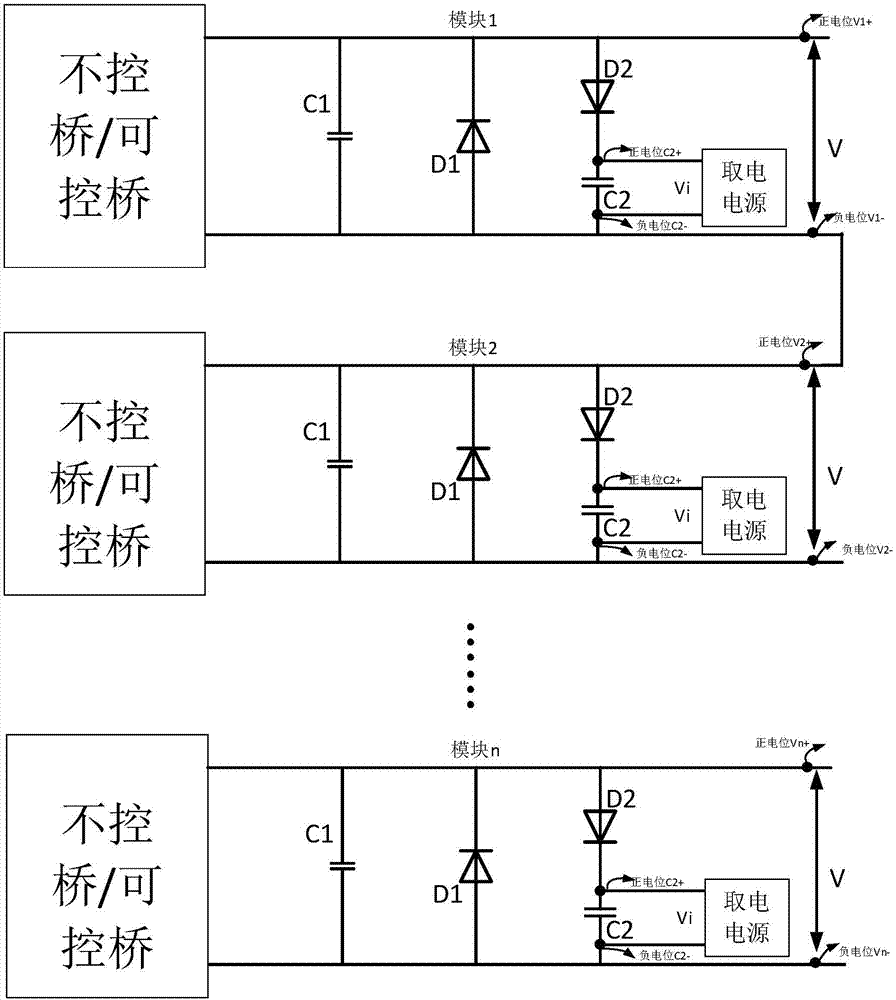Multi-module-series-circuit-based module self-power-taking and protection circuit
A technology of series circuit and protection circuit, which is applied in the field of module self-collection and protection circuit, can solve the problems of increasing the insulation requirements of the power supply, the voltage drop of the power supply, and the system paralysis.
- Summary
- Abstract
- Description
- Claims
- Application Information
AI Technical Summary
Problems solved by technology
Method used
Image
Examples
Embodiment Construction
[0014] The present invention will be further described below in conjunction with the accompanying drawings and specific embodiments.
[0015] The multi-module series circuit mainly refers to the output circuit part in the multi-module input parallel output series connection and the input circuit part in the multi-module input series output parallel connection, which is composed of n identical modules in series, n≥1, such as figure 2 shown.
[0016] Such as figure 1 As shown, the module self-power supply and protection circuit of the multi-module series circuit of the present invention is mainly composed of capacitor C1, diode D1, diode D2 and capacitor C2. Diode D2 and capacitor C2 are connected in series to form a module self-feeding circuit. The cathode of diode D2 is connected to the positive potential C2+ of capacitor C2. Capacitor C1 is connected in parallel with diode D1. The cathode of diode D1 is connected to the anode of diode D2 and the positive potential point of ...
PUM
 Login to View More
Login to View More Abstract
Description
Claims
Application Information
 Login to View More
Login to View More - R&D
- Intellectual Property
- Life Sciences
- Materials
- Tech Scout
- Unparalleled Data Quality
- Higher Quality Content
- 60% Fewer Hallucinations
Browse by: Latest US Patents, China's latest patents, Technical Efficacy Thesaurus, Application Domain, Technology Topic, Popular Technical Reports.
© 2025 PatSnap. All rights reserved.Legal|Privacy policy|Modern Slavery Act Transparency Statement|Sitemap|About US| Contact US: help@patsnap.com


